Johnson Street Storm Overflow Screening Project (2022)
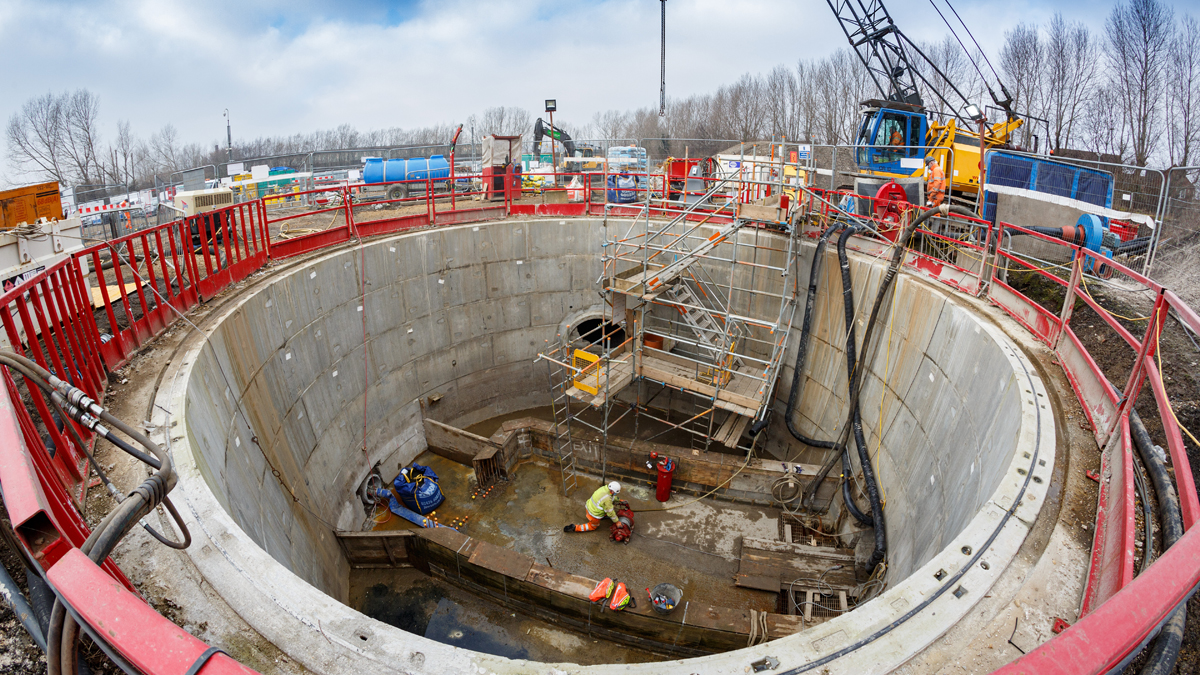
Construction of the new main storm overflow shaft - Courtesy of Esh-Stantec JV
The Johnson Street Storm Overflow (SO) Screening Project in Gateshead was designed to protect the River Tyne from aesthetic pollution improving river quality for the benefit of customers, wildlife and the environment. The SO at Johnson Street was previously a significant unscreened discharge to the River Tyne. The project scope was to screen all spill flows up to 6mm in a 1 in 5-year return period storm event to meet an Environment Agency permit with these requirements met by December 2021. Esh-Stantec JV was appointed by Northumbrian Water Group (NWG) to deliver this project. Works comprised a new large diameter combined sewer overflow shaft, mechanical self-cleansing screens, large diameter overflow pipework and channel break out to increase sewer conveyance capacity.
Existing network
The existing network included an unscreened low-level combined sewage storm overflow within a 6m deep chamber. High flow rates within this relatively small chamber meant in situ installation of screens was not a viable option. Combined sewage storm spill flows from this chamber flowed by gravity roughly 1km within the overflow network before discharging into the River Tyne.
The existing storm overflow chamber needed modifying to be utilised as a secondary network relief point, together with increased conveyance capacity to maximise re-use of the existing system and significantly reduce new infrastructure. During construction, a new strategically positioned temporary pumping station (PS) would be needed to manage the high sewerage flows for long periods of time with minimal temporary works.
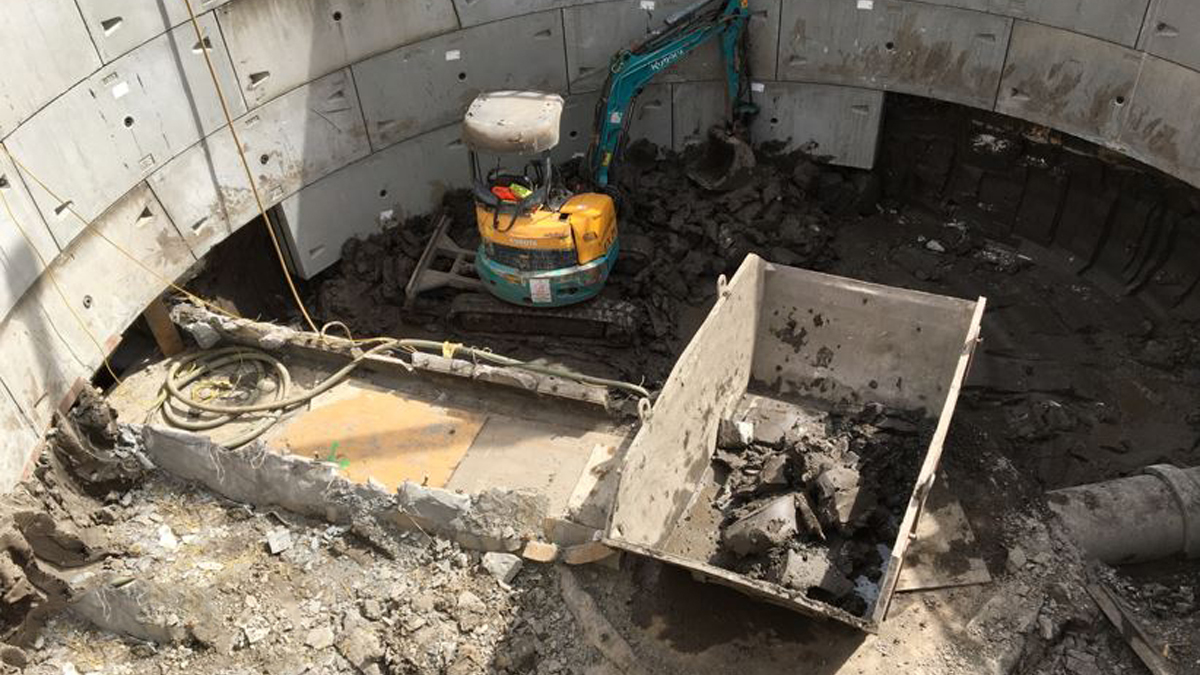
Construction of the new sewer overflow chamber around existing live sewers – Courtesy of Esh-Stantec JV
Modelling
One of the first design activities undertaken by Esh-Stantec JV was the hydraulic modelling of the existing SO and the upstream and surrounding catchment. Verified by a flow survey, the model confirmed frequent spills and peak flow rates of around 1800 l/s in a 1 in 5-year return period storm event.
The hydraulic model also predicted significant limitations on any proposal to replace the spill chamber at the existing location in terms of existing overflow pipe capacity, upstream hydraulic levels near properties at risk of sewer flooding, and site constraints. An innovative approach was tested using the existing spill chamber and associated pipework as a secondary network relief pipe for events exceeding 1 in 5-years.
New storm overflow and spill network design
The solution design included:
- A new 10.5m diameter 8m deep combined sewage storm overflow chamber, incorporating two high flow rate mechanical self-cleansing screens, constructed over the live Tyneside Interceptor Sewer.
- New 1800mm overflow sewer with intermediate manholes.
- 100m of dry weather flow channel break out to increase conveyance capacity of the Tyneside Interceptor Sewer.
- Utilising the existing SO as a secondary 1 in 10 year return period network relief point, with an off-site fabricated stainless steel weir installed within the chamber.
- Automated penstock linked to upstream and downstream water levels to detect and remove blockages.
- New access road and cover arrangement to facilitate safe removal and maintenance of the mechanical screens.
This design met the key requirement of screening all flows up to 6mm in a 1 in 5-year return period storm event, with additional network capacity to balance hydraulic head losses associated with the screens, and reduce spill frequency and volume.
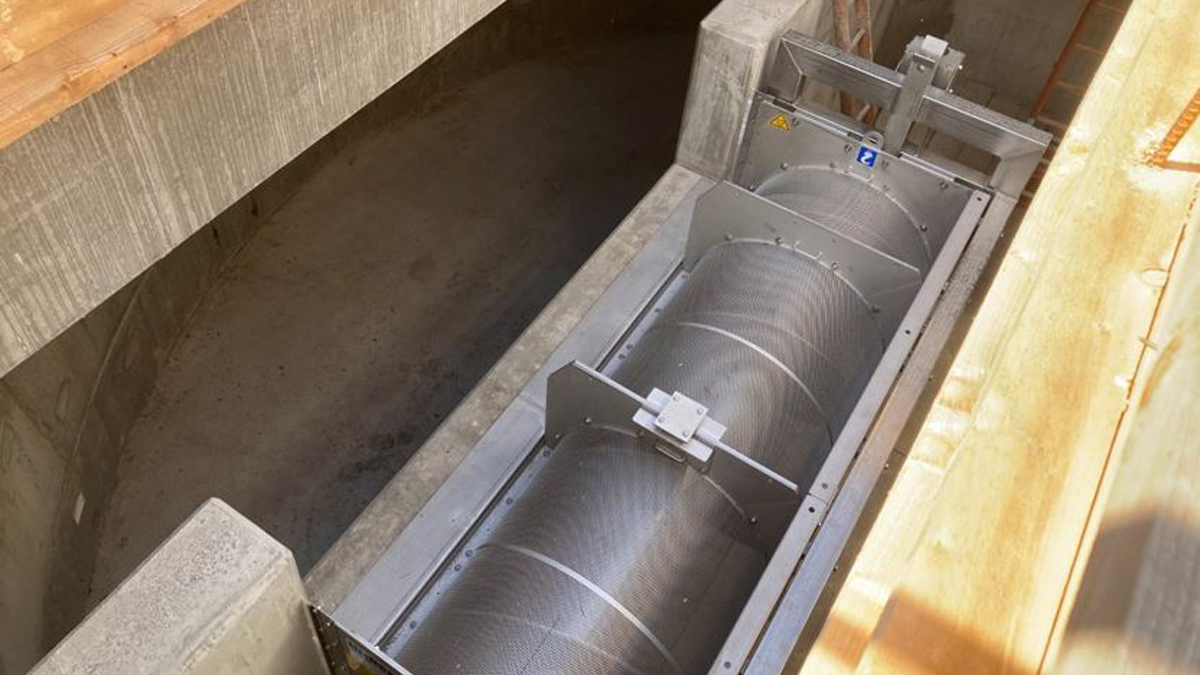
Installation of the new mechanical self-cleansing screen – Courtesy of Esh-Stantec JV
New storm overflow and spill network construction
The new 10.5m shaft was successfully constructed by Active Tunnelling using reinforced concrete segmental pieces underpinned to a shaft collar. Excavations continued around the live Tyneside Interceptor Sewer until the final stages of construction. Two additional smaller shafts acting as intermediate manholes were also constructed, one of which was located within a narrow residential street.
Two high flow rate mechanical self-cleansing screens were installed, tested and commissioned in a collaborative effort between Huber Technology, Retroflo, Esh-Stantec JV and NWG. Additional M&E items were installed to assist with EDM monitoring and blockage risk reduction using an automated penstock.
New 1800mm diameter spill sewers were constructed using hydraulic jacking tunneling techniques, with one of the intermediate manholes adapted firstly to serve the purpose of a drive pit, then re-purposed as a temporary pumping station for further works.
To enable sufficient flow to be conveyed to the new SO chamber, the concrete dry weather flow channel within the existing Tyneside Interceptor was removed. Dry safe working conditions were established by fully isolating the interceptor sewer using a temporary pumping station, strategically positioned within the intermediate manhole. This enabled the management of high sewage flows for long periods of time with minimal temporary works, including use of the existing overflow system as a bypass. The temporary pumping station was connected to mains electric supply, removing the need for temporary generators which reduced noise and air quality pollution impacts to the local environment.
Temporary weirs, pipework and penstocks were utilised in complex temporary works scenarios to manage flows at various stages, including live sewage flows, storm flows and tidal ingress into the network.
Construction continued during national and local COVID-19 lockdowns, with significant changes to working practices to ensure a safe workplace for all staff during very challenging times.
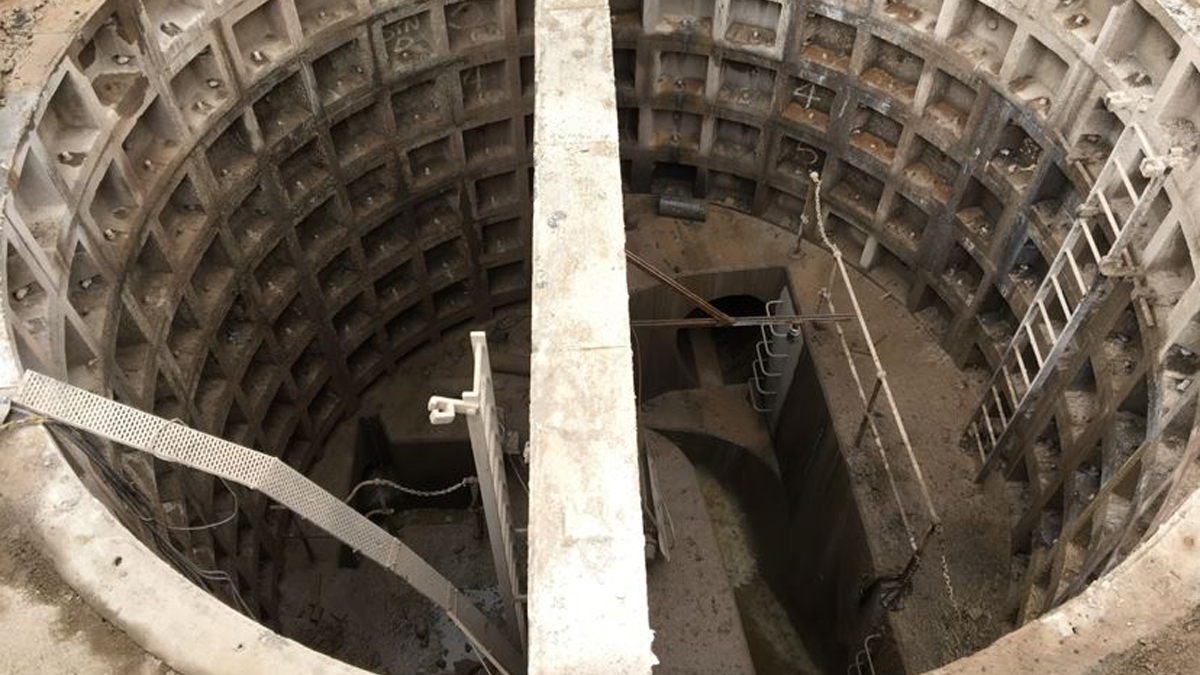
Existing storm overflow chamber with cover slab removed prior to modifications – Courtesy of Esh-Stantec JV
Johnson Street Storm Overflow Screening Project: Supply chain – key particpants
- Principal designer & contractor: Esh-Stantec UK JV
- EICA contractor: Retroflo Ltd
- CSO screen supplier: Huber Technology
- Shaft & tunneling designer: BSP Consulting
- Shaft & tunneling contractor: Active Tunnelling
- Temporary works design: James Christopher Consulting
- Ground investigation: Ian Farmer Associates
- Precise surveying: Three60 Mapping Ltd
- Topographical & utility survey: Spatial Geomatics Ltd
- Asbestos survey: Lucion Environmental
- Cube testing: Borcon Concrete Services Ltd
- CCTV & cleansing: ARM Pipetek Ltd
- Temporary works: MGF Ltd
- Labour civils & drainage: Kevin Metcalf
- Metalwork: JHT Fabrications Ltd
- Site electrical & generator: Young Engineering Services
- Joinery & steel fixing: JM Jackson
- Site security: The Protector Group
- Traffic management: Roadsafe Group
- Pest Control: All Clear Pest Control
- Landscaping: Stuart Marley Ltd
- Scaffolding: Tiger Specialist Access
Stakeholder engagement
At the outset of the project key stakeholders were identified, and a CLIP workshop was undertaken. This allowed all parties to sign up to the proposed solution and develop a comprehensive delivery programme.
The core project team regularly engaged with NWG stakeholders, ensuring their input into the design for an enhanced operable and maintainable asset with zero impact to the existing network performance. Early engagement with NWG maintenance teams ensured that the mechanical screens were the same products as elsewhere on the network to ease future maintenance. This successful model mitigated the requirement for redesign work. When complex issues were identified, such as the temporary flow management, mini design sprints were undertaken to provide the most efficient solution in the shortest time, including all parties, from end user to supplier.
Active Tunnelling and BSP Consulting’s specialist input was sought early during the design stage to ensure the programme and construction of the shafts and tunnels were efficient. Throughout the construction phase, weekly design/progress meetings were undertaken with both Retroflo and Active Tunnelling to ensure any issues could be mitigated to allow the project to complete on time and within budget.
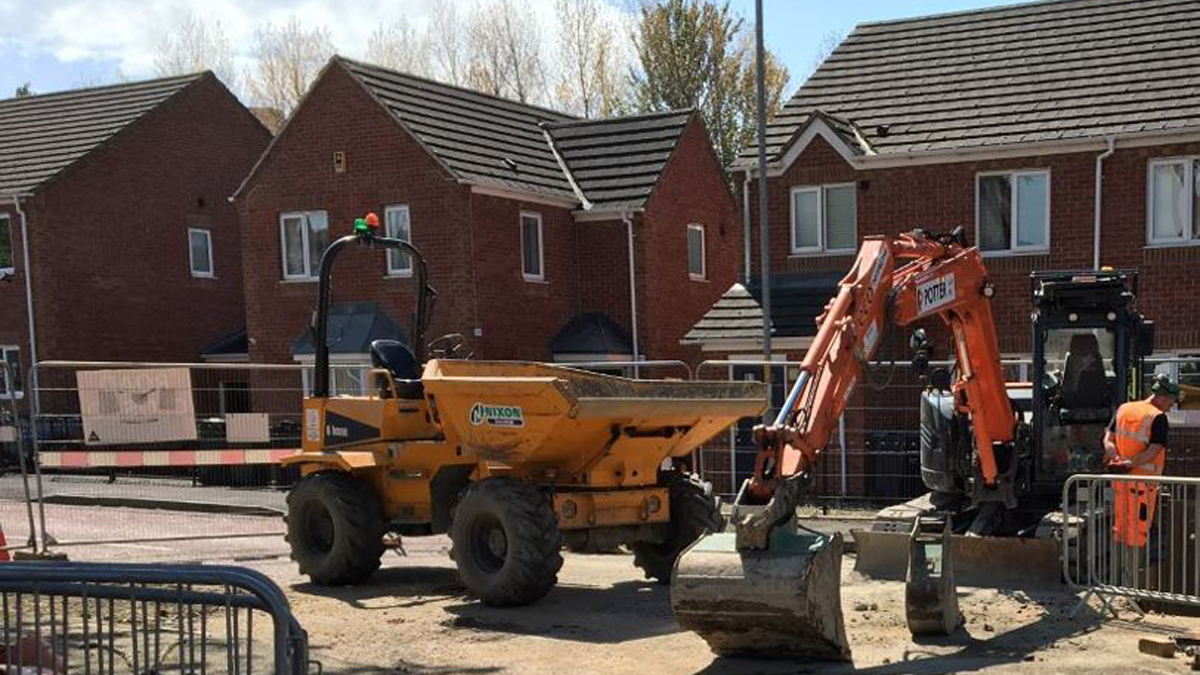
Construction of the smaller shafts within a residential street – Courtesy of Esh-Stantec JV
During the national lockdown, daily catch-up calls were undertaken between the design and construction teams to ensure everyone was up to date with the status of the works and the short term look ahead.
Early and on-going engagement with key suppliers was identified as essential during the CLIP workshop to achieve and maintain the programme, especially during the pandemic. Key suppliers were engaged early (pre-D&C contract) to drive best value, reduce repeated work and ultimately to enable the project to be delivered on-time and under budget.
Digital construction (BIM)
Complex structures were initially modelled in 3D using SketchUp, then detailed further using Bentley AECOsim, aided by point cloud laser surveys which helped all parties in the solution decision process understand the structure, gain accurate measurement take off and overall reducing confined space working.
Earthworks, site access tracks, and new pipelines were all detailed in Autodesk Civil 3D. Extractions from the models were inserted into the construction working drawings. All digital data was stored, developed, and shared seamlessly within the Common Data Environment and Task Information Delivery Plans.
Early in the project a collaborative ‘Design Sprint’ meeting was held with NWG and all key supply chain stakeholders to achieve wide agreement on interdependent project complexities (buildability, planning, estates, third party interaction, customer impact, EA deadlines and obligations) – findings were documented within the Esh-Stantec JV Collaboration Tool and shared with all parties.
Transparent communication was critical to maintaining progress throughout the pandemic, with all works continuing on-site. No time was lost during delivery due to the full team having the ability to make key decisions remotely, based on up to date, accurate information.
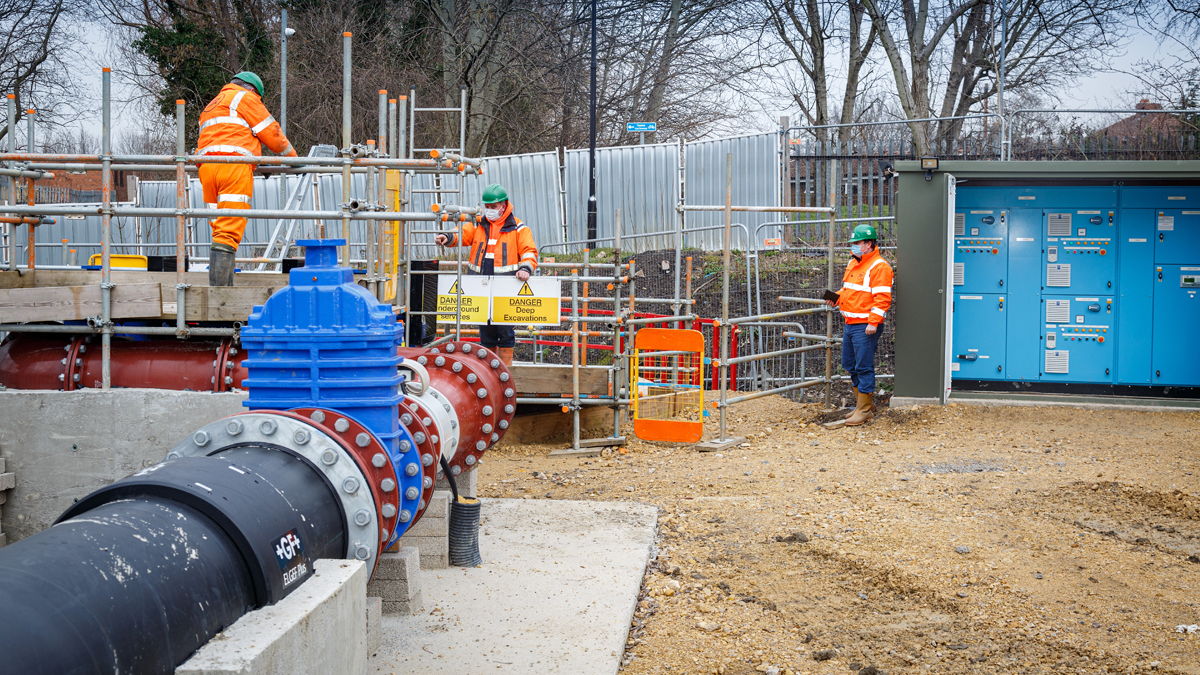
Temporary pumping station in operation – Courtesy of Esh-Stantec JV
Complex structures were initially modelled in 3D using SketchUp, then detailed further using Bentley AECOsim, aided by point cloud laser surveys which helped all parties in the solution decision process understand the structure, gain accurate measurement take off and overall reducing confined space working.
Earthworks, site access tracks, and new pipelines were all detailed in Autodesk Civil 3D. Extractions from the models were inserted into the construction working drawings. All digital data was stored, developed, and shared seamlessly within the Common Data Environment and Task Information Delivery Plans.
Early in the project a collaborative ‘Design Sprint’ meeting was held with NWG and all key supply chain stakeholders to achieve wide agreement on interdependent project complexities (buildability, planning, estates, third party interaction, customer impact, EA deadlines and obligations) – findings were documented within the Esh-Stantec JV Collaboration Tool and shared with all parties.
Transparent communication was critical to maintaining progress throughout the pandemic, with all works continuing on-site. No time was lost during delivery due to the full team having the ability to make key decisions remotely, based on up to date, accurate information.
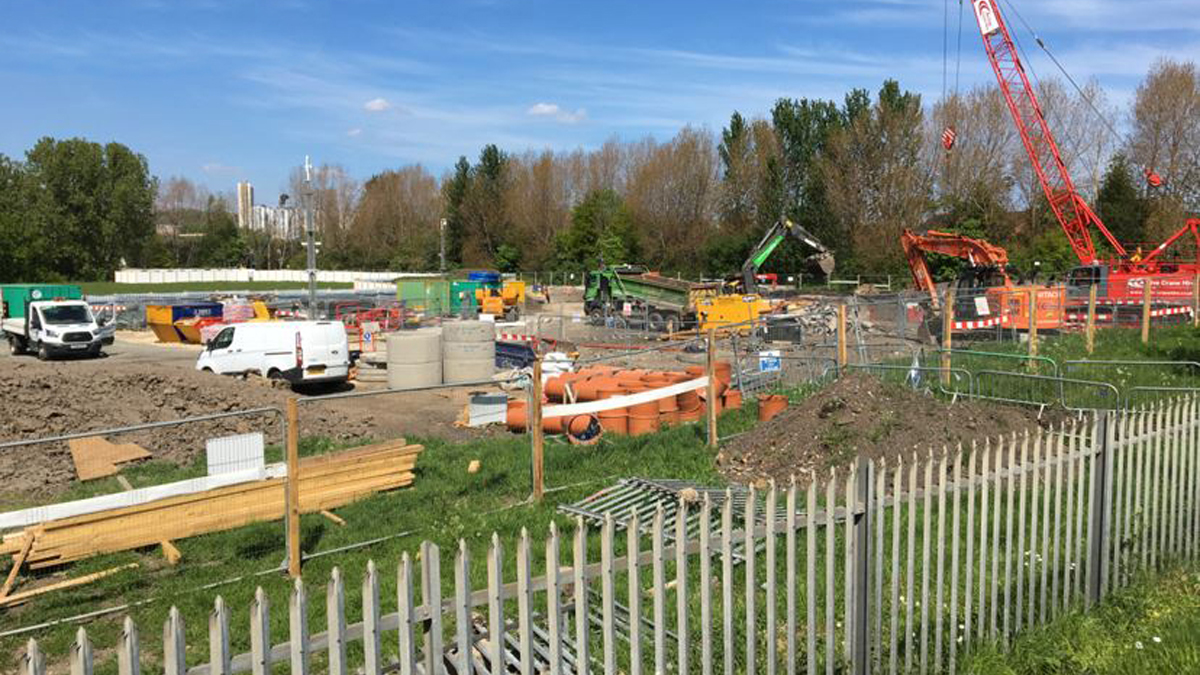
Overview of the working site set-up with various construction activities progressing in parallel – Courtesy of Esh-Stantec JV
Conclusion
The Johnson Street Storm Overflow Screening Project project has significantly reduced the aesthetic pollution from a 22,500 population catchment entering the River Tyne. Hydraulic modelling indicates a reduction in storm overflow spill frequency and volume of screened storm effluent spilling during storm events benefiting the environment and river quality.
Early engagement throughout the team and close collaborative working between all stakeholders maintained resilience through the challenges of the COVID-19 pandemic, and enabled the contract to be completed in January 2022 ahead of the end March regulatory date, at a project outturn cost of £6.95m against the budget of £7.85m.




